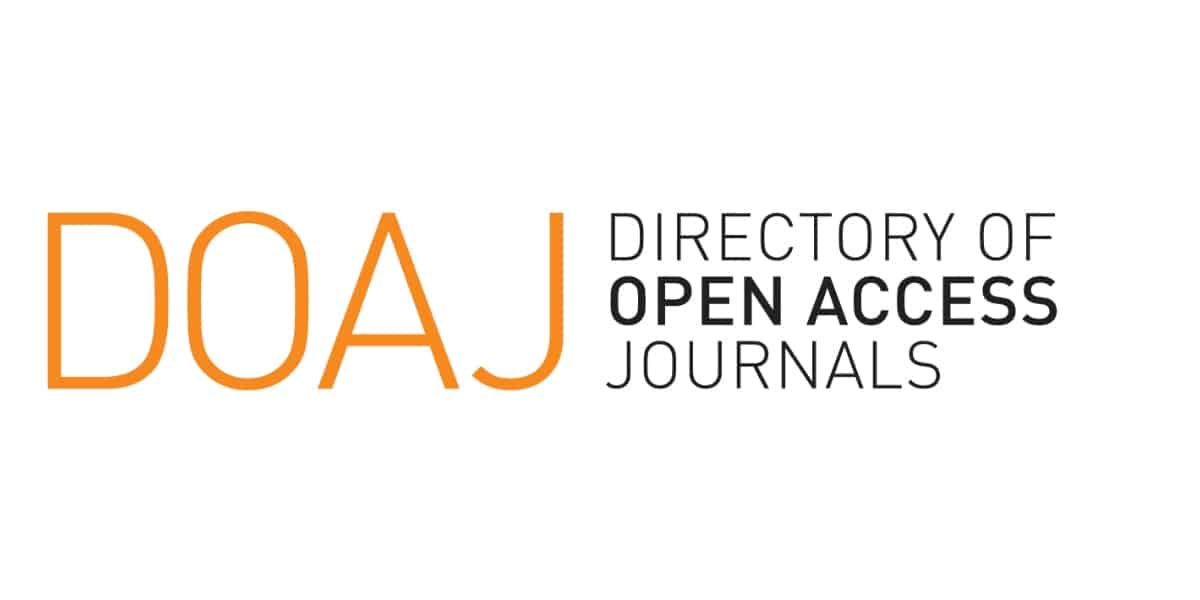Efektifitas Metode Elektrokoagulasi Dengan Penambahan Medan Magnet Dalam Menyisihkan TSS dan COD Air Limbah Industri Rumah Potong Hewan
Keywords:
Rumah Potong Hewan, Elektrokoagulasi, Medan Magnet, Kuat Arus, Waktu KontakAbstract
Slaughterhouse effluent is high in organic matter and suspended solids and requires treatment before direct discharge. We are combining electrocoagulation technology and magnetic fields as a treatment method to assess their impact on the effectiveness of TSS and COD removal. The aim of this study is to determine the effect of current strength and treatment contact time on the pH of the effluent and the efficiency of TSS and COD removal from slaughterhouse effluent. The variables in this study include current strengths of 1 ampere, 3 amperes and 5 amperes with treatment contact times of 30 minutes, 60 minutes, 90 minutes and 120 minutes. From the results of electrocoagulation experiments with and without a magnetic field, it is known that the magnetic field has the ability to accelerate the sedimentation process and remove suspended solids more effectively. The pH of the effluent increased with each increase in current and contact time. The best removal results were obtained in the electrocoagulation process with a magnetic field, which had a TSS removal of 96.06% and a COD removal of 89.37% at a pH of 8.3, using a current of 3 amperes and a contact time of 120 minutes.
References
[1] Sari, E. D. A., Moelyaningrum, A. D., & Ningrum, P. T. (2018). Kandungan Limbah Cair Berdasarkan Parameter Kimia di Inlet dan Outlet Rumah Pemotongan Hewan (Studi di Rumah Pemotongan Hewan X Kabupaten Jember). Journal of Health Science and Prevention, 2(2), 88–94.
[2] Apriyanti, E. (2018). Efek Sentra Pemotongan Ayam Terhadap Kesehatan Lingkungan Masyarakat Pemukiman. Jurnal Green Growth Dan Manajemen Lingkungan, 7(1), 35–50. https://doi.org/10.21009/jgg.071.03
[3] Subuharni, N., Masthura, & Ety Jumiati. (2023). Penurunan Kadar TSS Dan BOD Pada Pengolahan Limbah Cair Tahu Dengan Metode Elektrokoagulasi. Jurnal Redoks, 8(2), 41–47. https://doi.org/10.31851/redoks.v8i2.13096
[4] Legawa, F., Eka, G. C., Galih, V., & Putra, V. (2024). Metode Pengolahan Limbah Cair Puskesmas Menggunakan Tahapan Elektrokoagulasi Filtrasi dan Plasma. Jurnal Riset Farmasi, 53–60.
[5] Safitri, H. A., Muliandari, A., Asfarina, A., & Riyanto. (2020). Elektrokoagulasi Limbah Cair Industri Karet Menggunakan Elektroda Al-Al. Jurnal Mahasiswa, 11(1), 1–8.
[6] Prasetyaningrum, A., & Dharmawan, Y. (2018). Aplikasi Teknologi Elektrokoagulasi Pada Pengolahan Limbah Industri Elektroplating Sebagai Upaya Menghasilkan Produksi Kerajinan Logam Berbasis Green Technology. Jurnal Riptek, 12(1), 37–44.
[7] Fitria, N., Wulan, N., Anandita, L. D., Prajitna, J., & Vitasari, D. (2024). The Effect of Current Strength, Electrode Distance, and Coagulation Time on the Efficiency of Electrocoagulation of Batik Waste. The 19th University Research Colloqium 2024 Universitas Muhammadiyah Surakarta.
[8] Vatra, R. P. R., & Arifin. (2023). Pengolahan Air Lindi TPA Batu Layang Menggunakan Metode Elektrokoagulasi dan Filtrasi. G-Tech: Jurnal Teknologi Terapan, 7(2), 737–744. https://doi.org/10.33379/gtech.v7i2.2467
[9] Sutanto, S., Iryani, A., & Sarahwati. (2018). Efficiency and effectiveness as well as electrocoagulation kinetics of palm sago waste treatment (in Indonesian). Ekologia, 18(1), 10–16.
[10] Ramadhan, A. F., Amri, I., & Drastinawati, D. (2021). Pengaruh Jarak Elektroda Dan Kuat Arus Pada Pengolahan Air Gambut Dengan Proses Elektrokoagulasi Secara Kontinu. Journal of Bioprocess, Chemical and Environmental Engineering Science, 2(1), 46–55. https://doi.org/10.31258/jbchees.2.1.46-55
[11] Wahyuni, N. L. E., Nurcahyo, Leoanggraini, U., Sudarman, R., Soeswanto, B., Muhari, E. H., Ngatin, A., & Sihombing, R. P. (2023). Pengolahan Air Limbah Tahu Menggunakan Metode Elektrokoagulasi dan Adsorpsi Secara Kontinyu [ Tofu Wastewater Treatment Using Continuous Electrocoagulation and. KOVALEN: Jurnal Riset Kimia, 9(2), 140–150. https://bestjournal.untad.ac.id/index.php/kovalen
[12] HARDIKA, & SURURI, M. R. (2023). Penyisihan Kekeruhan Menggunakan Unit Koagulasi-Flokulasi Instalasi Pengolahan Air Minum : Review. FTSP Series : Seminar Nasional Dan Diseminasi Tugas Akhir 2023, 1995–2000.
[13] Ni’am, M. F., & Othman, F. (2014). Experimental Design of Electrocoagulation and Magnetic Technology for Enhancing Suspended Solids Removal from Synthetic Wastewater. International Journal of Science and Engineering, 7(2), 178–192. https://doi.org/10.12777/ijse.7.2.178-192
[14] Rusdi, H., Wonorahardjo, S., Utomo, Y., & Wijaya, A. (2020). Optimasi pH dan Konsentrasi Elektrolit dalam Elektrokoagulasi Limbah Surfaktan. JC-T (Journal Cis-Trans): Jurnal Kimia Dan Terapannya, 4(1), 21–28. https://doi.org/10.17977/um0260v4i12020p021
[15] Trisnaawati, & Purnama, H. (2021). Pengaruh waktu dan jarak elektroda pada pengolahan lindi dengan metode elektrokoagulasi-adsorpsi zeolit Effect of time and inter-electrode distance of leachate treatment using electrocoagulation-zeolite adsorption method. Jurnal Teknik Kimia, 27(2), 2721–4885. http://ejournal.ft.unsri.ac.id/index.php/jtk
[16] Loukanov, A., El Allaoui, N., Omor, A., Elmadani, F. Z., Bouayad, K., & Nakabayashi, S. (2020). Large-scale removal of colloidal contaminants from artisanal wastewater by bipolar electrocoagulation with aluminum sacrificial electrodes. Results in Chemistry, https://doi.org/10.1016/j.rechem.2020.100038
[17] Syaichurrozi, I., Sarto, S., Sediawan, W. B., Hidayat, M. 2021. Effect of Current and Initial pH on Electrocoagulation in Treating the Distillery Spent Wash with Very High Pollutant Content. Water, 13(1), 1-20.
[18] Ramadhan, M. L., Islam, U., Muhammad, K., Al-Banjari, A., Nur, N., Ali, A., Jl, A. :, No, A., Miai, S., Utara, K. B., Banjarmasin, K., Selatan, K., & Penulis:, K. (2024). Elektrolisis. 2(4), 105–112. https://doi.org/10.62383/polygon.v2i4.129
[19] N. Lintang et al., “Pengolahan Air Limbah Tahu Menggunakan MetodeElektrokoagulasi dan Adsorpsi Secara Kontinyu [ Tofu Wastewater Treatment Using Continuous Electrocoagulation and,” vol. 9, no. 2, pp. 140–150, 2023.
[20] Masrullita, M., Hakim, L., Nurlaila, R., & Azila, N. (2021). Pengaruh Waktu Dan Kuat Arus Pada Pengolahan Air Payau Menjadi Air Bersih Dengan Proses Elektrokoagulasi. Jurnal Teknologi Kimia Unimal, 10(1), 111. https://doi.org/10.29103/jtku.v10i1.4184
[21] Takwanto, A., Mustain, A., & Sudarminto, H. P. (2018). Penurunan Kandungan Polutan pada Lindi dengan Metode Elektrokoagulasi-Adsorbsi Karbon Aktif untuk Memenuhi Standar Baku Mutu Lingkungan. Jurnal Teknik Kimia Dan Lingkungan, 2(1), 11.
[22] Sihombing, R. P., & Sarungu, Y. T. (2022). Pengolahan Air Limbah Industri Tekstil dengan Metoda Elektrokoagulasi Menggunakan Elektroda Besi (Fe) dan Aluminum (Al). JC-T (Journal Cis-Trans): Jurnal Kimia Dan Terapannya, 6(2), 11–18. https://doi.org/10.17977/um0260v6i22022p011
[23] Temperatur, A. P., Kuat, D. A. N., Proses, A., Terhadap, E., Tarik, K., & Dan, K. T. (2018). Analisis pengaruh temperatur, waktu, dan kuat arus proses elektroplating terhadap kuat tarik, kuat tekuk dan kekerasan pada baja karbon rendah. 9(3), 173–182.
[24] Anugrah, M. (2024). The Effect of Voltage Variation, Plate Area and Electrocoagulation Time on TSS Reduction of Laundry Wastewater Using Aluminum Electrode. CHEMVIRO: Jurnal Kimia Dan Ilmu Lingkungan (JKIL), 2(1), 113–122.
[25] Legawa, F., Eka, G. C., Galih, V., & Putra, V. (2024). Metode Pengolahan Limbah Cair Puskesmas Menggunakan Tahapan Elektrokoagulasi Filtrasi dan Plasma. Jurnal Riset Farmasi, 53–60.
[26] I. Amri, Pratiwi Destinefa, and Zultiniar, “Pengolahan limbah cair tahu menjadi air bersih dengan metode elektrokoagulasi secara kontinyu,” Chempublish J., vol. 5, no. 1, pp. 57–67, 2020, doi: 10.22437/chp.v5i1.7651.
[27] Ngatin, A., Nugraha, A. R., Gozali, M., Priyambudi, A., Hariyadi, T., Sihombing, R. P., Yusuf, Y., Jayanti, R. D., & Indarti, R. (2022). Pengaruh Laju Alir Terhadap Penurunan Pengotor Limbah Laundry Metode Elektrokoagulasi Kontinyu Berpengaduk. Fluida, 15(2), 89–96. https://doi.org/10.35313/fluida.v15i2.4040
[28] Nasional, S., Kimia, T., & Brotohardjono, S. (2023). PENGOLAHAN LIMBAH CAIR LAUNDRY DENGAN THE EFFECT OF VOLTAGE AND CONTACT TIME ON LAUNDRY. 72–77.
[29] Kurniawan, H. F. (2021). Pengaruh Kecepatan Pengadukan dan Jarak Elekroda terhadap Penurunan Kadar COD dan TSS pada Limbah Batik Menggunakan Metode Elektrokoagulasi. Syntax Idea, 3(11), 2386–2394. https://doi.org/10.46799/syntax-idea.v3i11.1578
[30] Gulo, A., & Silitonga, P. M. (2021). Indonesian Journal of Chemical State University of Medan. Indonesian Journal of Chemical Science and Techonology, 04(2), 88–95.
[31] Afina Radityani, F., Hariyadi, S., Heri Yuli Yanto, D., & Heris Anita, S. (2020). Penerapan Teknik Elektrokoagulasi dalam Pengurangan Bahan Organik Air Limbah Kegiatan Perikanan (The Application of Electro-Coagulation Technique in Reducing Organic Materials in Waste Water of Fish Culture). Jurnal Ilmu Pertanian Indonesia (JIPI), 25(2), 283–290. https://doi.org/10.18343/jipi.25.2.283
[32] Wiyanto, E., Harsono, B., Makmur, A., Pangputra, R., Julita, J., & Kurniawan, M. S. (2017). Penerapan Elektrokoagulasi Dalam Proses Penjernihan Limbah Cair. Jetri : Jurnal Ilmiah Teknik Elektro, 12, 19–36. https://doi.org/10.25105/jetri.v12i1.1449
Downloads
Published
Issue
Section
License
Copyright (c) 2024 Nurilita Amalia Cahyani, Firra Rosariawari (Author)

This work is licensed under a Creative Commons Attribution 4.0 International License.
















